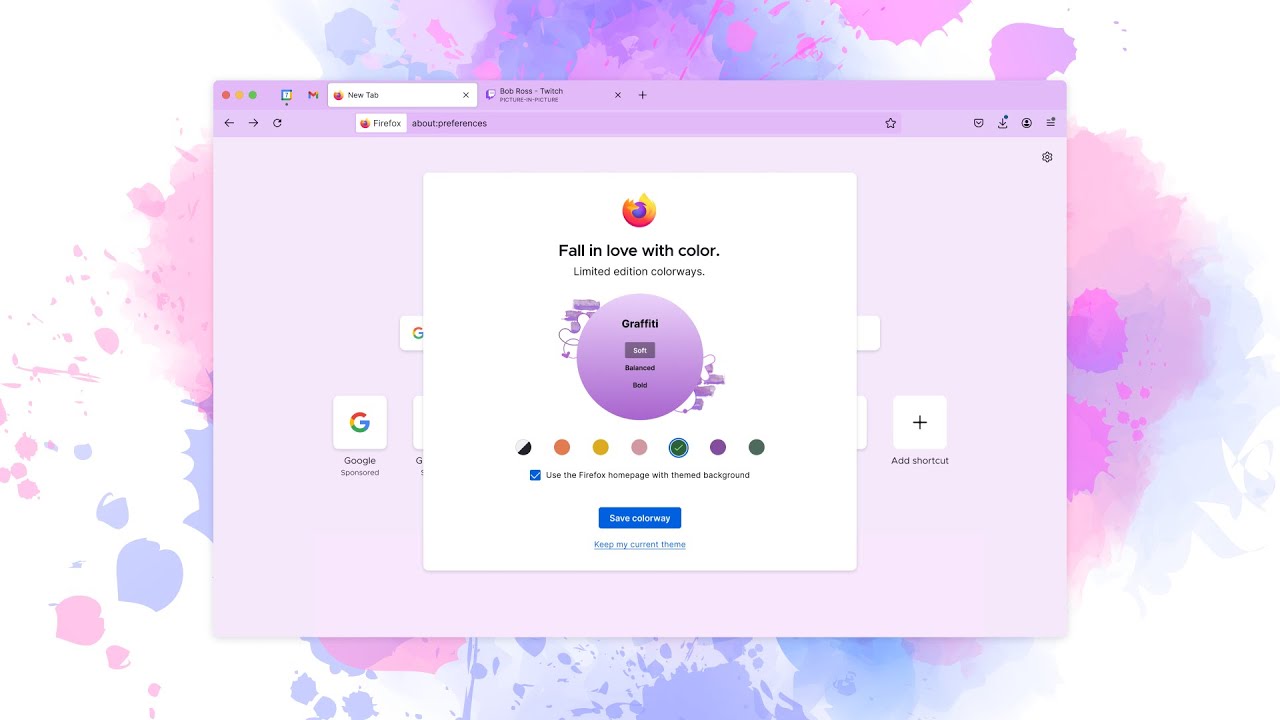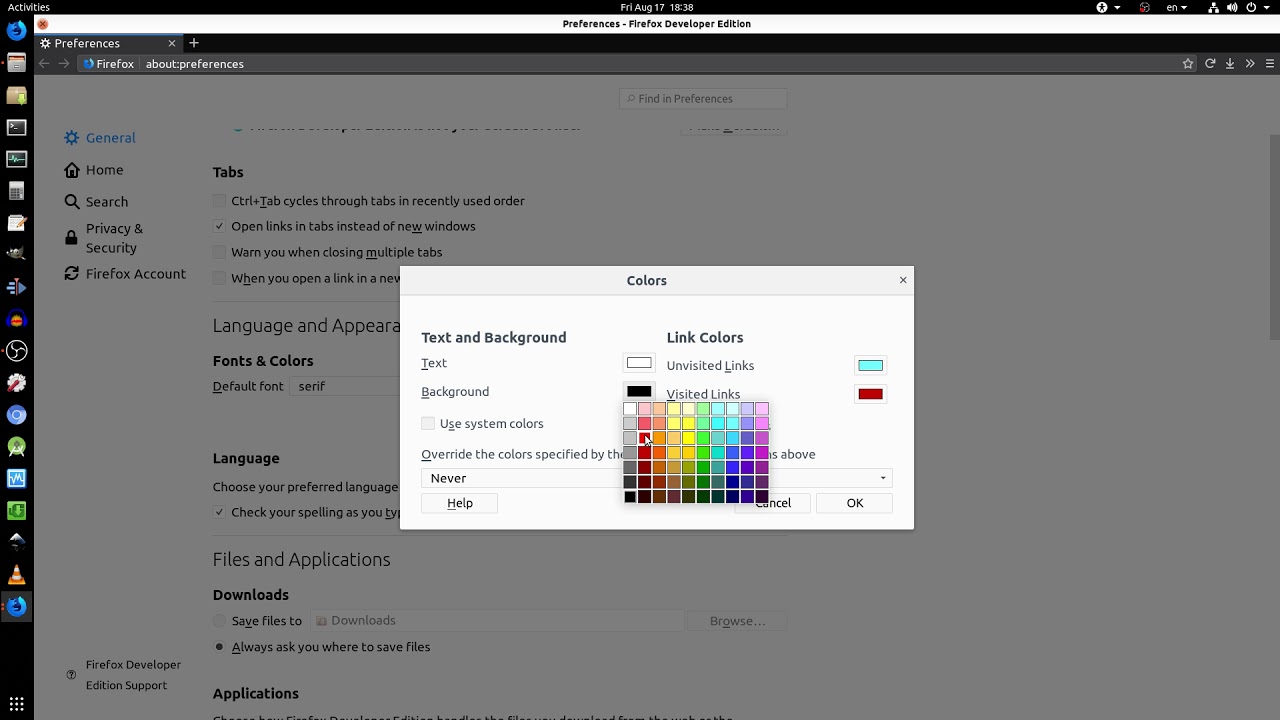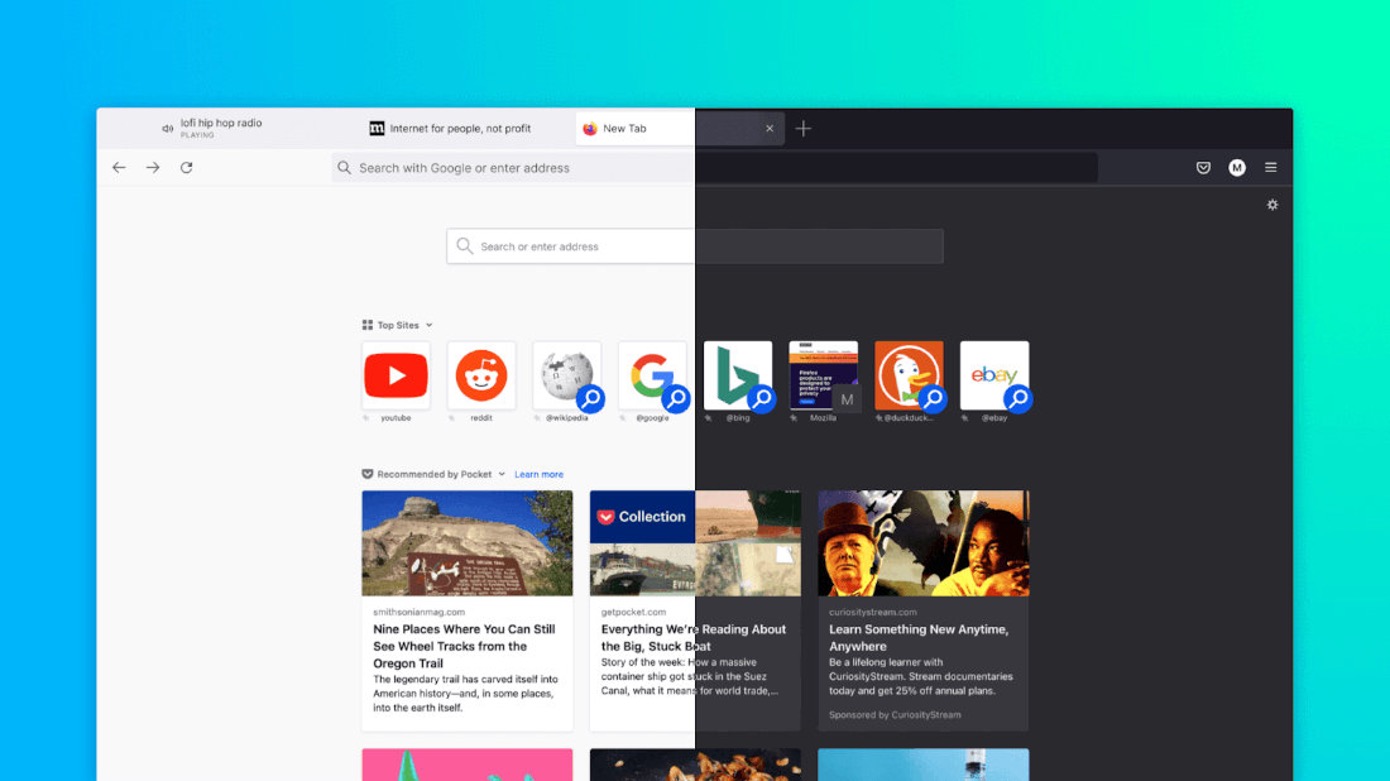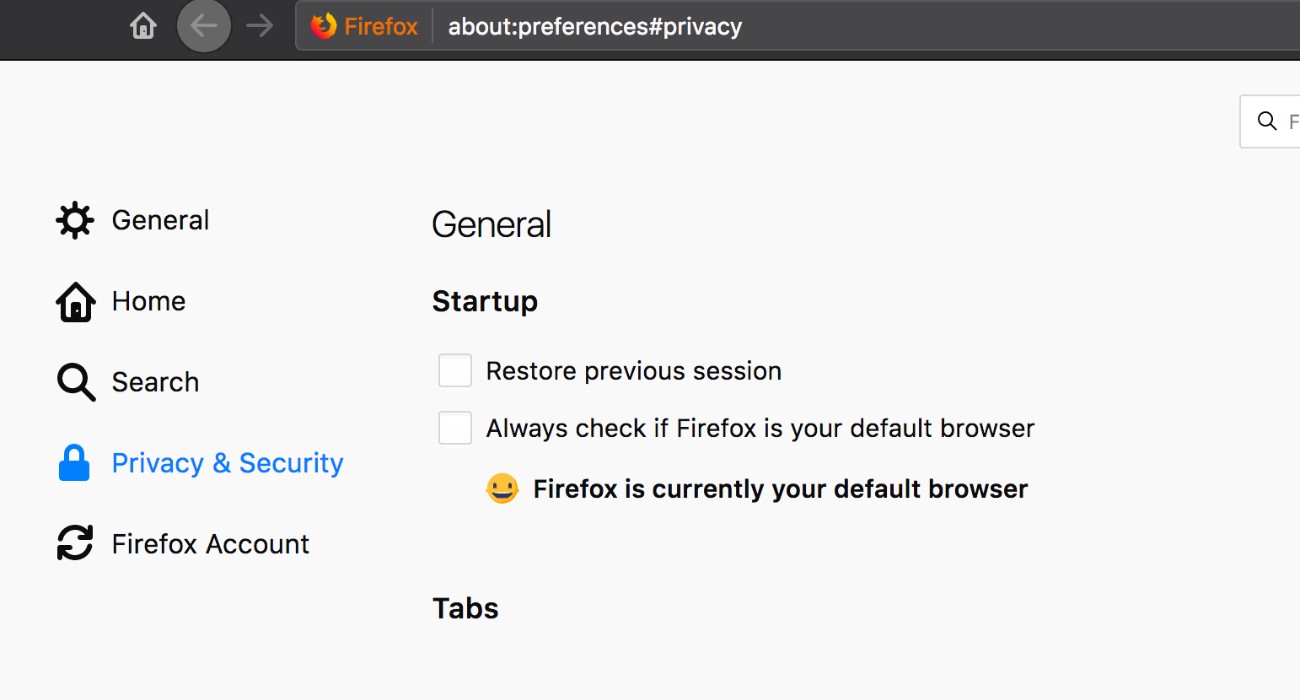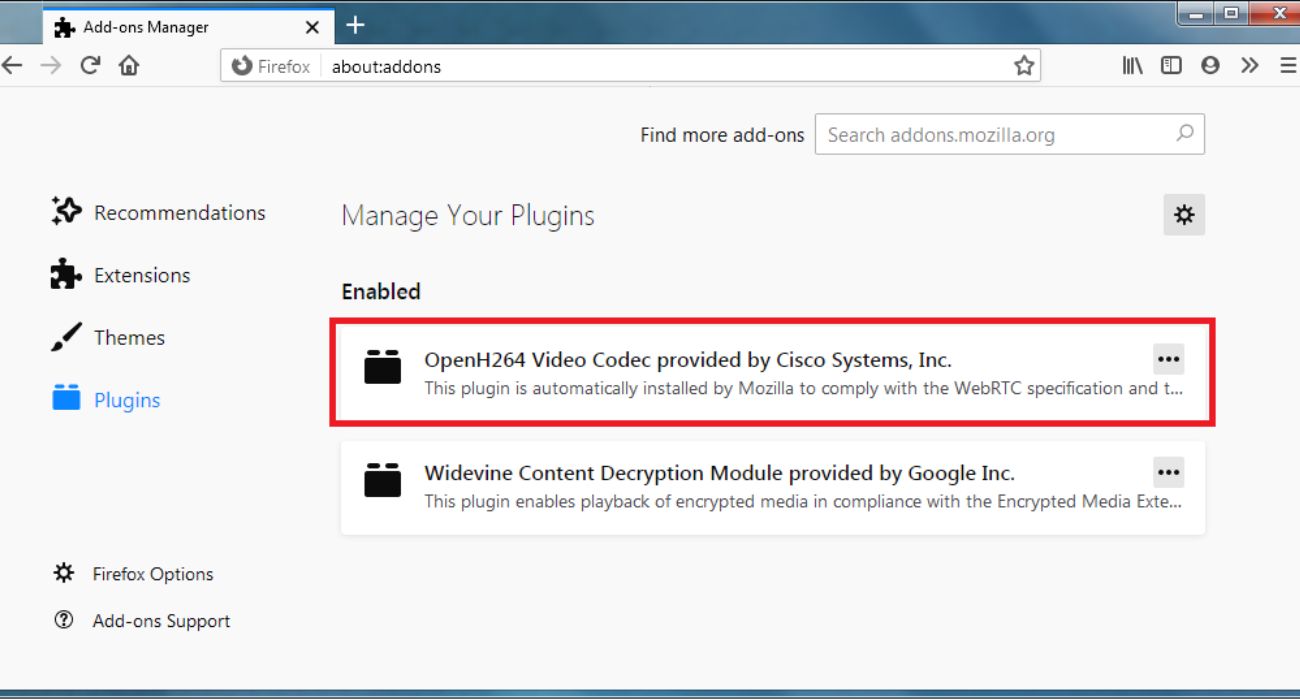Introduction
Creating a custom theme for your Firefox browser can be an exciting and rewarding endeavor. With the ability to personalize the appearance of your browser, you can express your unique style and preferences while enhancing your browsing experience. Whether you're a design enthusiast, a fan of customization, or simply seeking a fresh look for your browser, making a custom Firefox theme allows you to unleash your creativity and tailor your browsing environment to your liking.
In this comprehensive guide, we will explore the step-by-step process of creating a custom Firefox theme. From understanding the essential components of a theme to designing and testing your creation, you will gain valuable insights into the intricate art of theme customization. By the end of this journey, you will be equipped with the knowledge and skills to craft a personalized Firefox theme that reflects your individuality and aesthetic taste.
Embarking on this creative endeavor not only allows you to personalize your browsing experience but also provides a deeper understanding of the inner workings of Firefox themes. As you delve into the process of creating a custom theme, you will gain valuable insights into web development, design principles, and the technical aspects of browser customization. This hands-on experience can be both educational and empowering, offering a unique opportunity to expand your skill set and express your creativity in a digital realm.
Whether you're a seasoned developer or a novice enthusiast, this guide is designed to cater to individuals of all skill levels. With clear and detailed instructions, accompanied by practical tips and best practices, you will find the process of creating a custom Firefox theme accessible and enjoyable. So, roll up your sleeves, unleash your imagination, and let's embark on this exciting journey of bringing your dream Firefox theme to life.
Getting Started
To embark on the exhilarating journey of creating a custom Firefox theme, you need to lay the groundwork by familiarizing yourself with the essential tools and resources. Here's a comprehensive guide to help you kickstart your theme customization adventure:
-
Understand the Basics: Before diving into the technical aspects of theme creation, it's crucial to grasp the fundamental concepts of Firefox theming. Familiarize yourself with the structure of a Firefox theme, including its components such as images, colors, and manifest files. This foundational knowledge will serve as a solid springboard for your creative endeavors.
-
Set Up Your Development Environment: Ensure that you have a reliable text editor or integrated development environment (IDE) at your disposal. This will be your digital canvas for crafting the intricate details of your custom theme. Additionally, having a web browser with Firefox installed is essential for testing and previewing your theme as it takes shape.
-
Access Developer Resources: Firefox offers a wealth of developer resources and documentation to guide you through the process of theme creation. Explore the official Mozilla Developer Network (MDN) for in-depth tutorials, code samples, and best practices related to Firefox theming. Leveraging these resources will empower you to navigate the intricacies of theme customization with confidence.
-
Explore Existing Themes: Take a tour of the diverse range of existing Firefox themes available in the official add-ons repository. Analyze the design elements, color schemes, and visual styles of these themes to draw inspiration for your own creation. This exploration can provide valuable insights into popular design trends and user preferences, guiding your creative decisions.
-
Join the Community: Engage with the vibrant community of Firefox theme enthusiasts and developers. Participate in forums, discussion groups, or social media communities dedicated to Firefox theming. By connecting with like-minded individuals, you can seek advice, share ideas, and gain inspiration from the collective wisdom of the community.
By laying a strong foundation through these initial steps, you are poised to embark on a fulfilling and enriching journey of creating a custom Firefox theme. With a clear understanding of the basics, access to essential resources, and a supportive community, you are well-equipped to dive into the intricacies of theme customization and bring your creative vision to life.
Creating the Theme Manifest
The theme manifest serves as the foundational blueprint that defines the visual and behavioral aspects of your custom Firefox theme. This crucial component encapsulates the essential parameters and directives that govern the appearance and functionality of your theme. To embark on the creation of the theme manifest, follow these essential steps:
-
Understanding the Manifest Structure: The theme manifest is typically represented in JSON (JavaScript Object Notation) format, providing a structured outline of the theme's attributes. It encompasses key elements such as the theme name, description, author information, version number, and various properties that dictate the visual elements of the theme, including colors, images, and UI (user interface) components.
-
Defining Theme Properties: Within the manifest, you will specify a range of properties to define the visual and behavioral characteristics of your theme. This includes setting the primary and accent colors, defining background images, configuring the appearance of tabs, buttons, and other UI elements, and specifying the layout and styling of the browser interface.
-
Incorporating Custom Icons and Images: The manifest allows you to integrate custom icons and images to personalize the visual identity of your theme. By referencing image files within the manifest, you can seamlessly incorporate custom icons for buttons, toolbar elements, and various UI components, adding a distinctive touch to your theme's aesthetics.
-
Implementing Dynamic Theme Properties: Leveraging the manifest, you can introduce dynamic theme properties that adapt to user interactions or system settings. This enables your theme to respond to user actions, such as hovering over UI elements or toggling between browser modes, creating an engaging and interactive browsing experience.
-
Ensuring Compatibility and Compliance: As you craft the theme manifest, it's imperative to adhere to the guidelines and best practices outlined by Mozilla for creating Firefox themes. This includes ensuring compatibility with different Firefox versions, adhering to performance standards, and maintaining compliance with security protocols to guarantee a seamless and secure user experience.
By meticulously crafting the theme manifest, you lay the groundwork for a captivating and cohesive Firefox theme that reflects your unique style and preferences. This pivotal stage sets the stage for the subsequent design and implementation phases, empowering you to infuse your browser with a personalized visual identity that resonates with your individuality.
Designing the Theme
Designing a custom Firefox theme is a captivating journey that allows you to infuse your browser with a distinctive visual identity tailored to your personal taste. As you delve into the design phase, you'll have the opportunity to unleash your creativity and attention to detail, shaping every aspect of the browser's appearance to reflect your unique style. Here's a comprehensive overview of the key elements involved in designing a captivating Firefox theme:
Visual Elements and Aesthetics
The visual elements of your theme play a pivotal role in defining its overall appeal. From selecting a color palette that resonates with your preferences to curating captivating background images, every visual aspect contributes to the cohesive aesthetic of your theme. Consider the emotional impact of colors, the harmony of visual elements, and the balance of contrast to create a visually engaging and harmonious browsing experience.
Iconography and UI Elements
Custom icons and UI elements offer an opportunity to inject personality and flair into your theme. Whether it's designing unique icons for navigation buttons, toolbar elements, or menu icons, meticulous attention to iconography can elevate the visual appeal of your theme. Strive to ensure that the icons and UI elements align with the overall theme concept, reinforcing a cohesive and immersive user experience.
Typography and Readability
The choice of typography significantly influences the readability and visual coherence of your theme. Selecting appropriate fonts, font sizes, and text styles is crucial in ensuring a comfortable and visually pleasing reading experience for users. Pay attention to legibility, contrast, and overall typographic hierarchy to create a theme that is not only visually captivating but also user-friendly.
Consistency and Cohesion
Maintaining consistency across all visual elements is essential for creating a polished and professional-looking theme. From the alignment of UI components to the coherence of design elements across different browser interfaces, strive to establish a sense of visual harmony and cohesion. Consistency fosters a seamless and immersive browsing experience, elevating the overall quality of your custom Firefox theme.
User Interaction and Feedback
Incorporating subtle visual cues and animations to respond to user interactions can enhance the interactive nature of your theme. Consider implementing intuitive hover effects, smooth transitions, and visual feedback mechanisms to create a dynamic and engaging user experience. Thoughtful user interaction design adds a layer of sophistication to your theme, elevating it beyond mere visual aesthetics.
By meticulously attending to these design considerations, you can craft a captivating and cohesive Firefox theme that reflects your individuality and design sensibilities. The design phase serves as a canvas for your creative expression, allowing you to shape a browsing environment that resonates with your unique vision and captivates users with its visual allure.
Testing and Debugging
Once you have meticulously crafted the visual and behavioral aspects of your custom Firefox theme, it's imperative to subject it to rigorous testing and debugging to ensure a seamless and polished user experience. The testing phase serves as a critical checkpoint to identify and rectify any potential issues or inconsistencies that may detract from the overall quality of your theme. Here's a detailed exploration of the essential steps involved in testing and debugging your custom Firefox theme:
Cross-Version Compatibility
Testing your theme across different versions of the Firefox browser is essential to ensure broad compatibility and a consistent user experience. Verify that your theme functions seamlessly across the latest stable release as well as earlier versions, addressing any compatibility issues that may arise due to version-specific changes in Firefox's architecture or user interface.
User Interface Consistency
Thoroughly scrutinize the visual elements and user interface components of your theme to ensure consistency and coherence across various browser interfaces. Pay close attention to the alignment of UI elements, the rendering of custom icons, and the overall aesthetic integrity of the theme across different browsing contexts, such as tabs, menus, and toolbars.
Performance Optimization
Assess the performance impact of your theme to guarantee that it operates efficiently without compromising browser responsiveness or loading times. Evaluate the resource utilization of your theme, including memory consumption and rendering speed, and optimize any elements that may contribute to performance bottlenecks or sluggish user interactions.
Responsiveness and User Interaction
Test the responsiveness of your theme to user interactions, such as hovering over UI elements, clicking buttons, and navigating through browser tabs. Ensure that interactive elements exhibit intuitive behavior and provide visual feedback to user actions, creating a seamless and engaging browsing experience that aligns with user expectations and modern design standards.
Error Handling and Edge Cases
Anticipate and address potential error scenarios and edge cases that may arise during user interactions with your theme. Thoroughly test the handling of error conditions, such as unexpected user inputs or system configurations, and implement robust error handling mechanisms to gracefully manage such situations without disrupting the overall user experience.
Accessibility and Readability
Verify that your theme maintains optimal readability and accessibility for users with diverse visual preferences and accessibility needs. Conduct thorough testing to ensure that text elements exhibit sufficient contrast, fonts are legible, and visual elements adhere to accessibility standards, fostering an inclusive browsing experience for all users.
By meticulously subjecting your custom Firefox theme to comprehensive testing and debugging, you can elevate its quality and reliability, ensuring that it delivers a seamless and captivating browsing experience for users across diverse environments and usage scenarios. Embracing a meticulous approach to testing and debugging empowers you to refine and perfect your theme, setting the stage for its successful deployment and widespread user adoption.
Packaging and Distributing the Theme
Packaging and distributing your custom Firefox theme marks the culmination of your creative journey, as you prepare to share your meticulously crafted creation with the global community of Firefox users. This pivotal phase involves the encapsulation of your theme into a deployable package and the strategic dissemination of your creation to reach a wide audience of enthusiasts. Here's a comprehensive exploration of the essential steps involved in packaging and distributing your custom Firefox theme:
Creating the Theme Package
The first step in the packaging process involves consolidating all the components of your theme, including the manifest file, custom images, and any additional resources, into a cohesive package. This typically involves organizing the theme assets within a structured directory and creating a compressed archive, such as a ZIP file, to encapsulate the entire theme. Ensuring that the package encompasses all necessary files and adheres to the prescribed structure is essential for seamless deployment and installation.
Documentation and Metadata
Accompanying your theme package with comprehensive documentation and metadata enhances its accessibility and user engagement. Include a detailed README file that provides clear instructions for installing and activating the theme, along with insights into the design inspiration and customization options. Additionally, crafting compelling metadata, such as a captivating theme description, captivating screenshots, and relevant tags, enriches the presentation of your theme in the Firefox Add-ons repository, attracting potential users and conveying the unique value of your creation.
Submission to the Add-ons Repository
The official Firefox Add-ons repository serves as a prominent platform for sharing and promoting your custom theme. Submitting your theme to the repository involves creating a developer account, meticulously filling out the submission form, and uploading your theme package along with the accompanying metadata. Adhering to the submission guidelines and quality standards outlined by Mozilla is crucial to ensure the seamless review and approval of your theme, paving the way for its visibility to a global audience of Firefox users.
Promotional Strategies
Upon successfully publishing your theme on the Firefox Add-ons repository, leveraging promotional strategies can amplify its visibility and user adoption. Share your theme across social media platforms, engage with the Firefox community, and seek opportunities to showcase your creation in relevant forums and discussions. Encouraging user reviews, soliciting feedback, and actively participating in theme-related conversations can foster a vibrant ecosystem around your theme, driving its recognition and popularity.
Continuous Maintenance and Updates
After the initial deployment of your custom Firefox theme, prioritizing continuous maintenance and updates is essential to ensure its relevance and longevity. Respond to user feedback, address reported issues, and consider incorporating new features or design enhancements based on evolving user preferences. By demonstrating a commitment to the ongoing improvement of your theme, you can cultivate a loyal user base and sustain the enduring appeal of your creation.
By meticulously navigating the packaging and distribution phase, you can propel your custom Firefox theme into the spotlight, captivating users with its unique visual identity and enriching the browsing experiences of Firefox enthusiasts worldwide. Embracing a strategic and user-centric approach to packaging and distribution empowers you to share your creative vision with a global audience, leaving a lasting impression in the vibrant landscape of Firefox theming.







